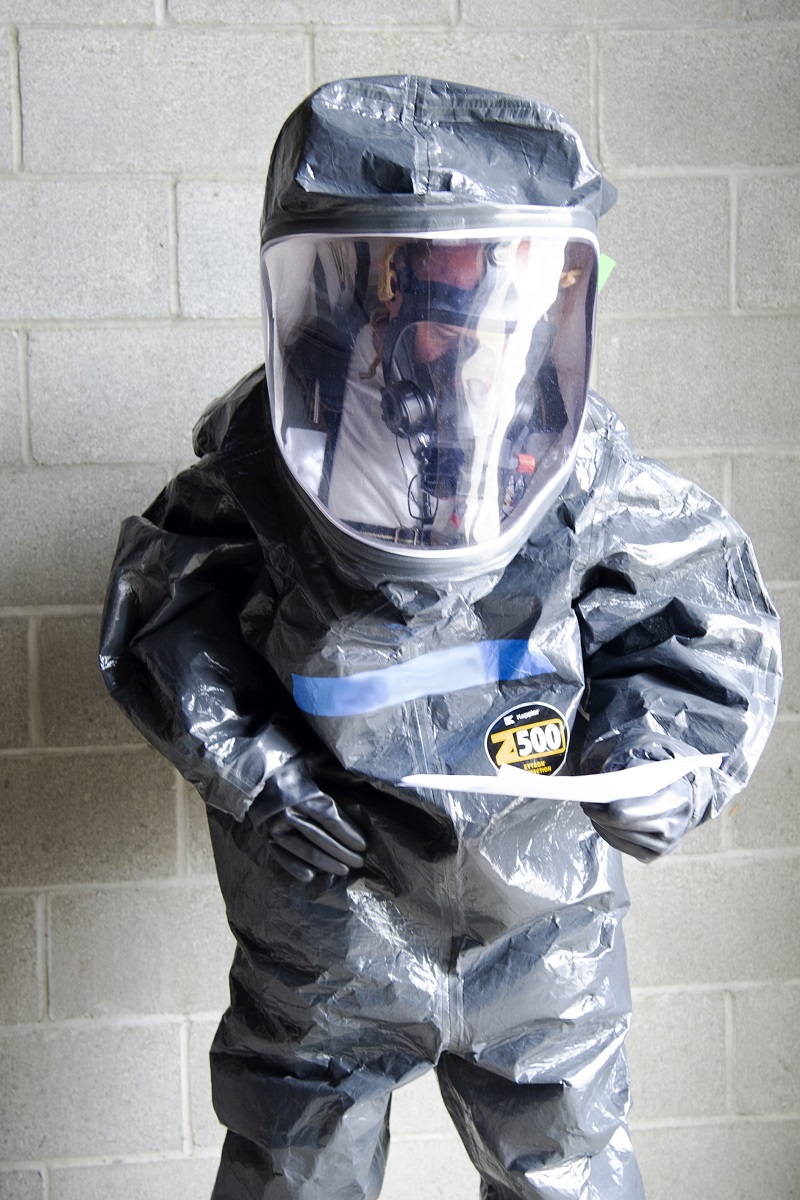Every day, across the nation, emergency responders are dispatched to calls with situations ranging from basic structural fires to complex search and rescue operations to domestic violence or assaults. Emergency responders answering those calls for help oftentimes arrive at a scene with limited information, so communication between themselves and their colleagues becomes of the utmost importance. When responding to a hazardous material incident, personal protective equipment (PPE) may need to be worn, which can significantly impact the ability to communicate.
The most common way for responders to communicate with each other during an emergency scenario where PPE must be worn, is through the use of in-suit communications (ISC) equipment – radio accessories that enable them to communicate effectively without relying on just using a radio (which can be difficult or impossible to use in some PPE). ISC equipment are extensions of responders’ portable two-way radios and typically consist of microphones, headsets, earpieces and activation accessories such as push-to-talk devices or hands-free voice-operated exchange. However, each of these tools has different strengths and weaknesses which must be carefully considered by responders before they use this equipment in the field.
In August 2019, DHS Science and Technology Directorate’s (S&T) National Urban Science and Technology Laboratory (NUSTL) conducted a System Assessment and Validation for Emergency Responders (SAVER) field assessment, supported by the Department of Energy’s Pacific Northwest National Laboratory (PNNL), at the City of Seattle Joint Training Facility in Seattle, Washington. Six fire service responders, each with at least 10 years of experience using ISC and hazmat equipment, served as subject matter expert evaluators and assessed pre-selected models of ISC equipment from Dräger, CeoTronics, CavCom, and TEA Headsets.
“Communications in general is always important, especially in first responder settings,” said Deputy Chief Willie Barrington, Seattle Fire Department. “It’s our life line – it means everything to us. We’re always looking at ways that we can better communicate while in the field and in our gear.”
 To ensure responders have the information needed to make educated decisions about the types of communications gear they procure and use, S&T established the SAVER program, run by NUSTL. The SAVER program coordinates with other organizations to ensure projects are flexible and responsive to emergency responder requirements; assessments are conducted objectively, and unbiased assessment reports about equipment performance are disseminated to the responder community.
To ensure responders have the information needed to make educated decisions about the types of communications gear they procure and use, S&T established the SAVER program, run by NUSTL. The SAVER program coordinates with other organizations to ensure projects are flexible and responsive to emergency responder requirements; assessments are conducted objectively, and unbiased assessment reports about equipment performance are disseminated to the responder community.
“The SAVER program is an invaluable program that helps us to make sure we can address any concerns we may have with equipment prior to purchasing it,” said firefighter Grady Poole, Seattle Fire Department. “Through these hands-on assessments, we have an opportunity to look at emerging technologies, get our hands on it, test it in a realistic environment, validate our assumptions or expectations of how it will perform, and then share our findings and ideas with other responders from around the country.”
To conduct the assessments, the fire service responders participated in four operational scenarios where they 1) familiarized themselves with the features and specifications of the ISC equipment and how to use it properly, 2) donned full Level A PPE with different types of ISC equipment, 3) conducted building entry drills where they climbed stairs and moved objects and other gear, and 4) communicated with each other in noisy environments. They repeated each scenario to evaluate every piece of ISC equipment.
After all the equipment was evaluated, NUSTL and PNNL surveyed the responders to gather their feedback and relevant data regarding how the ISC performed during each operational scenario. The ISC were evaluated on five criteria:
- Usability – ergonomics and ease of use when performing relevant tasks;
- Capability – product features or functions needed to perform relevant tasks;
- Deployability – ease of use, including transport, training, and operational restrictions;
- Maintainability – amount of maintenance and minor repairs that may be needed throughout the life of the equipment; and
- Affordability – total cost of ownership over the life of the equipment, including purchase price, training costs, warranty costs, recurring costs and maintenance costs.
The feedback and data from the responders’ assessments are being compiled and analyzed. The NUSTL In-Suit Communications Assessment Report will be released to the national first responder community later this year.
“Our SAVER assessment report will be a valuable tool for responders because it includes the results of all of our evaluations and feedback from these assessments,” explained NUSTL Test Engineer Hasan Shahid. “These results include responder feedback on how easy the ISC products were to set up and use, how well they worked and what types of technical difficulties, if any, they experienced while using them.”

